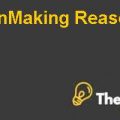Defining Policy Transfer
Policy transfer is the process under which the knowledge about the ideas, institutions, administrative arrangement and policies within one of the political setting are utilized for the development of the ideas, institutions, administrative arrangement and policies in another political institution(Dolowitz, 2000). In simple words, it could be defined as the spread of the policy or any important aspect of the policy across the different units of the government which tend to occur as a result of the knowledge of the policy and its aspects in the similar governmental units. Policy transfer is the subset of the policy diffusion but policy diffusion is widely defined as the spread of the knowledge about the policies regardless of the fact that whether the units results occur from spreading of the knowledge or other factors such as the convergence(Dolowitz, 2000).
Convergence means that a unit adopts a policy similar to another unit because the problems and the issues that are encountered by that unit are similar to the other unit. Convergence can occur to a unit even if that unit is unaware about the existence of the policy in any of the other units. Policy learning is the determinant of policy transfer and policy transfer, therefore, cannot occur without policy learning. Policy transfer has a long history and many different policies have been introduced such as the welfare to work policies, zero balance policing and the business movement districts between the different national states(Evans, 2000). It has been the main subject of the academic research over the past several years since the 1990s and it has been primarily led by the political scientists.
Policy Transfer Essay Harvard Case Solution & Analysis
Literature has identified that the transfer of the policies occurs when the government look out to find remedies for the problems that are being faced by them. Such remedies can include searching for a remedy in the past for solving the problems in the past and using it for their own problem, appropriating more funds for the existing government problem or it might involve searching for the remedies through which any other government has dealt with similar problem. The vast literature focuses primarily on the last component of the policy transfer. Policy transfer can be either coercive or it can be voluntary(Dolowitz, 1996).
Whenever there is dissatisfaction with the existing policies then a voluntary policy transfer occurs however, when there is satisfaction with the current policies then there is no impetus for changing the policies and if still the policy change occurs it occurs through the coercive policy transfer. When the dissatisfaction occurs then the makers of the policy search for finding the solutions for alleviating their dissatisfaction(Pemberton, 2000). Emulation is also one of the typical components of policy transfer when the knowledge of all the innovations of the policy is borrowed from the other entities. This is usually helpful when the current or the past solutions are not available or could not be found within the home country(Evans, 2000).
In the same manner, lesson drawing is another important component of policy transfer under which programs and the policies elsewhere are examined for finding out that what had been done to resolve all the problems.............
This is just a sample partical work. Please place the order on the website to get your own originally done case solution.












